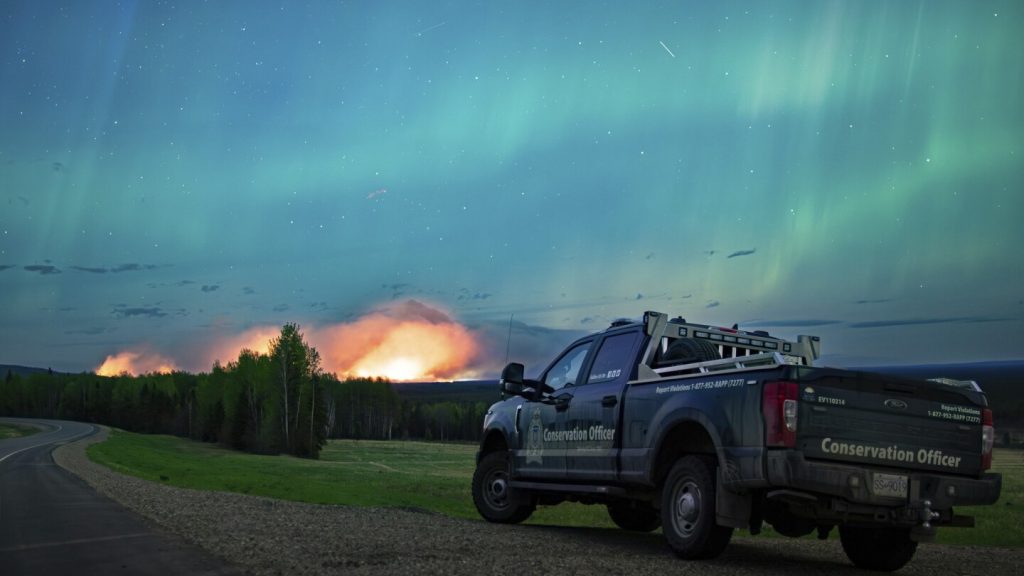Smoke from Canadian wildfires is causing health warnings across the Upper Midwest and Montana, as fires in British Columbia and Alberta have filled the skies with haze over parts of several states. Air quality advisories were issued in Minnesota and Wisconsin, urging people to stay indoors and avoid outdoor activities. The smoke is expected to drift south and east, potentially reaching as far as Iowa and Chicago. Last year, a record number of wildfires in Canada led to evacuations and hazy skies in the U.S., prompting health advisories in multiple cities.
The number of wildfires in Canada this year has been lower compared to the previous year, but the chances of more fires during the summer remain high. Lightning strikes could trigger fires in regions with intense drought, and climate change has been identified as a factor in the increased risk of wildfires. Experts warn that warming temperatures and dry conditions could contribute to an uptick in fire activity. While some regions in Canada may experience milder drought conditions, the risk of fires remains a concern, especially in areas with abundant vegetation that can serve as fuel for wildfires.
The impact of last year’s wildfires in Canada extended to the U.S., with smoke from fires in Quebec and Ontario reaching the eastern quarter of the country, from the Mississippi River Valley to Manhattan. Meteorologists are uncertain about the extent of haze that could affect the U.S. this year, but they anticipate a lower level of concern compared to the previous year. The unusual weather patterns that drove the smoke south and east, enveloping parts of the U.S., were a surprise to meteorologists and residents alike. Despite the potential for haze, experts believe the impact on the U.S. may not be as severe this year.
In response to the threat of wildfires, authorities are closely monitoring the situation and issuing air quality alerts to protect the public. The spread of smoke from Canadian wildfires underscores the interconnectedness of environmental issues across borders, highlighting the need for coordinated efforts to address the impacts of climate change on wildfire risk. As scientists predict a potentially challenging fire season in Canada, concerns about the spread of smoke and the health implications for residents in neighboring states remain a key focus. With the ongoing threat of wildfires and smoke pollution, communities in the affected regions are preparing for potential risks and taking steps to protect public health.
Experts are emphasizing the importance of preparedness and vigilance in the face of increasing fire activity and smoke pollution from wildfires. The potential for dry conditions and warmer temperatures in the coming months raises concerns about the risk of wildfires in regions that are susceptible to ignition. As authorities assess the factors contributing to the risk of wildfires, including climate change and drought conditions, efforts to mitigate the impact on public health and air quality are underway. The collaboration between government agencies, meteorologists, and environmental experts is crucial in addressing the challenges posed by wildfires and their broader implications for regional air quality and public safety.
While the current focus is on monitoring air quality and issuing alerts to protect residents from the effects of smoke pollution, the long-term strategies for managing wildfire risk and reducing the impact of climate change on fire activity remain a priority. By recognizing the complex relationship between environmental factors and the increased risk of wildfires, communities can work together to address the challenges posed by changing weather patterns and the potential for more frequent and intense fires. As the threat of wildfires continues to loom over the region, coordinated efforts to prevent and respond to fire emergencies are essential to safeguarding public health and the environment.


